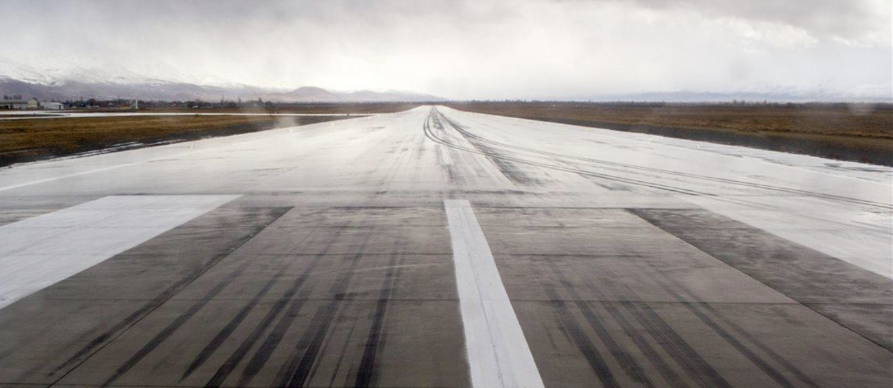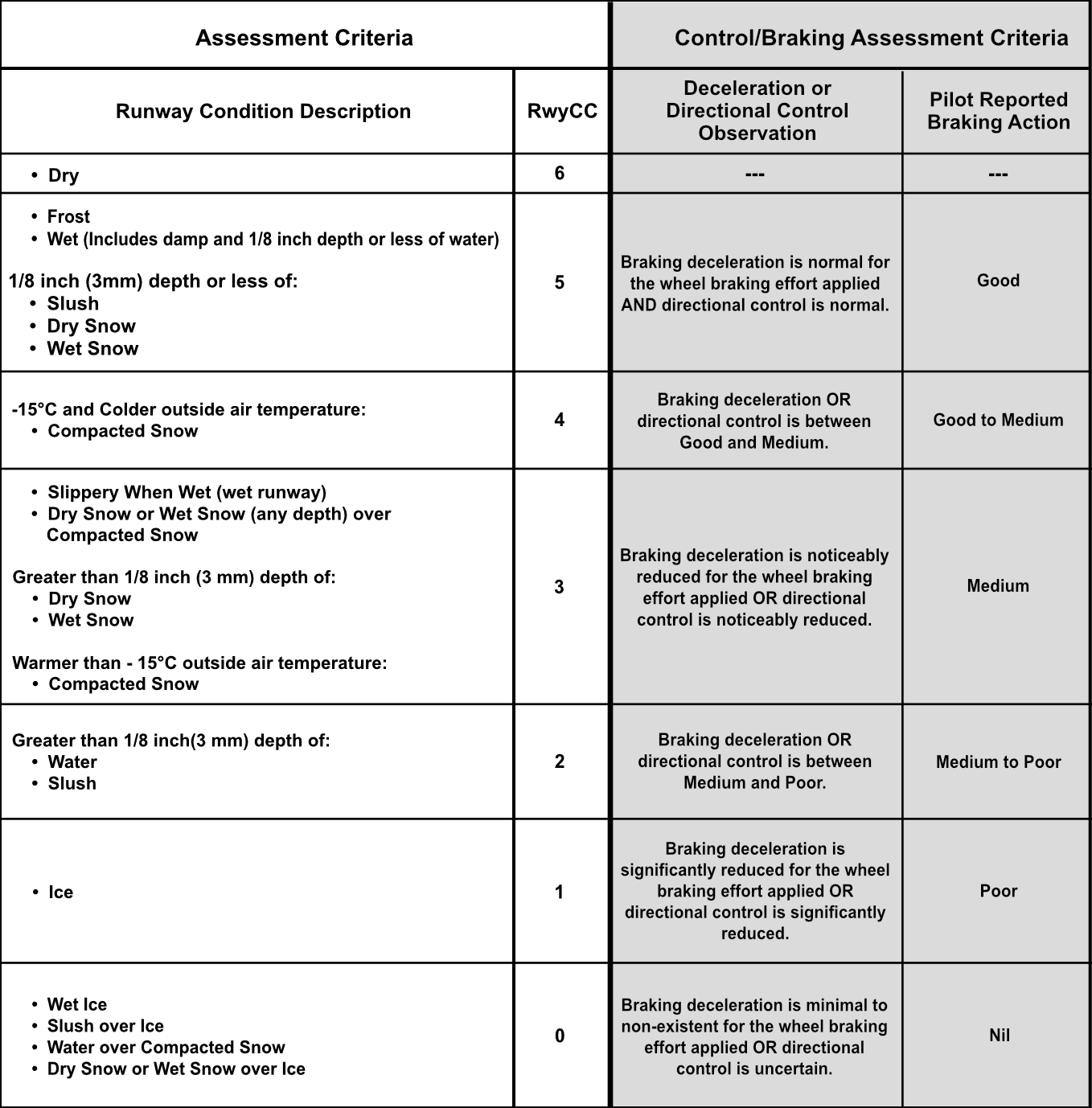
Knowing the runway conditions during the flight planning phase and prior to takeoff and landing is crucial for ensuring a safe and efficient flight.
Under some conditions it may not be safe to either takeoff or land on a runway surface.
The FAA acknowledged the need for improved runway condition assessment after a runway overrun accident involving a Boeing 737 at Chicago Midway airport in 2005. Previously, runway conditions were subjectively evaluated. Now, a matrix with clearly defined criteria and Runway Condition Codes (RwyCC) from 6 (dry pavement) to 0 (extremely hazardous) provides pilots with more accurate and reliable information via NOTAMs.
By understanding runway conditions in advance, pilots can make informed decisions for safe takeoff, landing, and contingency planning regarding:
Takeoff Performance Calculations
- Runway length, surface type, and slope impact takeoff roll and performance.
- A wet, icy, or contaminated runway increases takeoff distance.
- Wind direction and speed affect takeoff (e.g., headwind reduces takeoff distance, tailwind increases it).
Landing Performance and Braking Action
- Pilots must ensure the landing distance required does not exceed the available runway length.
- Poor braking action due to wet, snowy, or icy runways can lead to runway excursions.
- NOTAMs (Notices to Airmen) provide updates on temporary closures, maintenance, or hazards.
Alternate Airport Planning
- If the destination airport’s runways are closed or unsafe, an alternate must be selected.
- Runway conditions at the alternate must be suitable for landing.
Aircraft Limitations and Regulations
- Some aircraft have minimum required runway lengths based on weight and performance.
- Regulatory requirements (e.g., FAA, EASA) mandate consideration of runway conditions in dispatch planning.
Fuel Planning and Delays
- Poor runway conditions may cause delays or diversions, affecting fuel requirements.
- Holding fuel or alternate planning must account for potential runway availability issues.
Impact on Takeoff and Landing Speeds
- Contaminated runways require adjustments in Vr (rotation speed), and landing speeds.
- Aircraft may need higher approach speeds on slippery runways to maintain control.
Runway Conditions Conditions Matrix
By understanding runway conditions in advance, pilots can make informed decisions for safe takeoff, landing, and contingency planning.
Understanding and using the Runway Condition Matrix will help you make informed decision before committing to flight or landing at an airport.

Key Sources of Runway Condition Information
- ATIS (Automatic Terminal Information Service)
- NOTAMs (Notices to Airmen)
- METAR/TAF (Weather Reports and Forecasts)
- Airport or Air Traffic Control (ATC) Updates
- Runway Condition Reports (RCAM – Runway Condition Assessment Matrix)
Airport operators will use the matrix to assess paved runway surfaces, report contaminants present, and through the assistance of the Federal NOTAM System, determine the numerical Runway Condition Codes (RwyCC) based on the runway condition.
Pilots can then use the code to assess the effects of a given contaminant(s) as indicated by the associated condition code prior to landing or departing.